Table of Contents |
The artwork that you will be looking at today dates from 1872 to 1898 and focuses geographically on Paris, France.
As we’ve studied, the term “Impressionism” was first used as an insult by an art critic based on the unfinished appearance and obvious brushstrokes of a painting. Rather than taking offense, Impressionists such as Monet embraced the term and adopted it as the official label for their style of art.
As you explore the following examples, watch for these key elements:
At the heart of Impressionism is the desire to convey the fleeting nature of reality. The artists were particularly fascinated by the changing qualities of light throughout the day and across seasons. Their brushwork is often loose and fluid, capturing the vibrancy and dynamism of their subjects. Instead of focusing on precise details, Impressionists emphasized the overall impression of a scene, using color and light to evoke mood and atmosphere.
As we examined in Challenge 3.2, 2a, Claude Monet’s Impression: Sunrise was the first example of Impressionist artwork and served to embody the overall style of Impressionism. Another important painting by Monet that exemplifies the Impressionist approach to color and atmosphere is Woman With a Parasol—Madame Monet and Her Son, painted a year after the First Impressionist Exhibition.
Monet’s characteristic loose and expressive brushwork is evident in this painting. The rapid, short brushstrokes suggest the texture of the grass, the movement of the wind, and the dappled effect of light on the figures. This technique not only conveys the immediacy of the scene but also emphasizes Monet’s focus on capturing the fleeting effects of light and atmosphere.
In the context of modern experience, Woman With a Parasol represents the leisurely pursuit of spending time outdoors with family or friends. The painting captures a moment of calm and enjoyment, which resonates with the contemporary ideas of relaxation and quality time in nature.
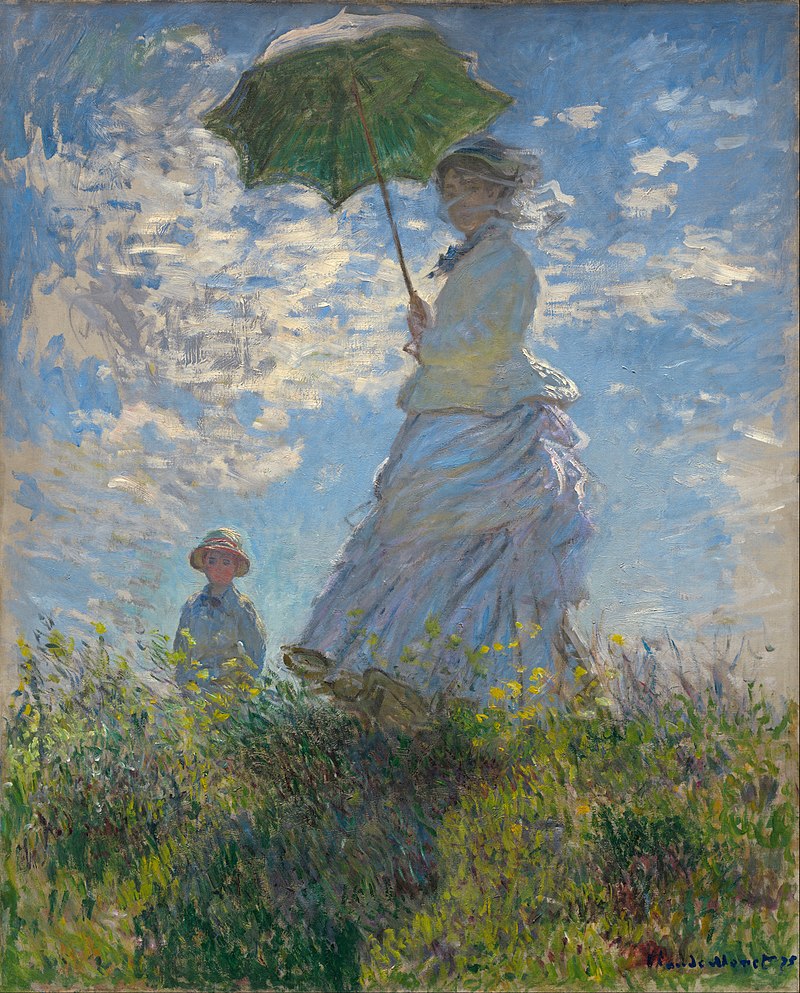
Woman With a Parasol—Madame Monet and Her Son
National Gallery of Art, Washington, DC
1875
Oil on canvas
The painting also holds personal significance as it portrays Monet’s own family. This intimate subject matter adds an emotional layer to the work, inviting viewers to share a private moment between a mother and her child. The painting’s warmth and tenderness reflect Monet’s affection for his family, making it not just a masterpiece of technique but also a deeply personal expression.
Woman With a Parasol is emblematic of the broader cultural shift that Impressionism represented. By focusing on ordinary people and everyday moments, Monet and his contemporaries challenged the traditional boundaries of what was considered appropriate subject matter for fine art.
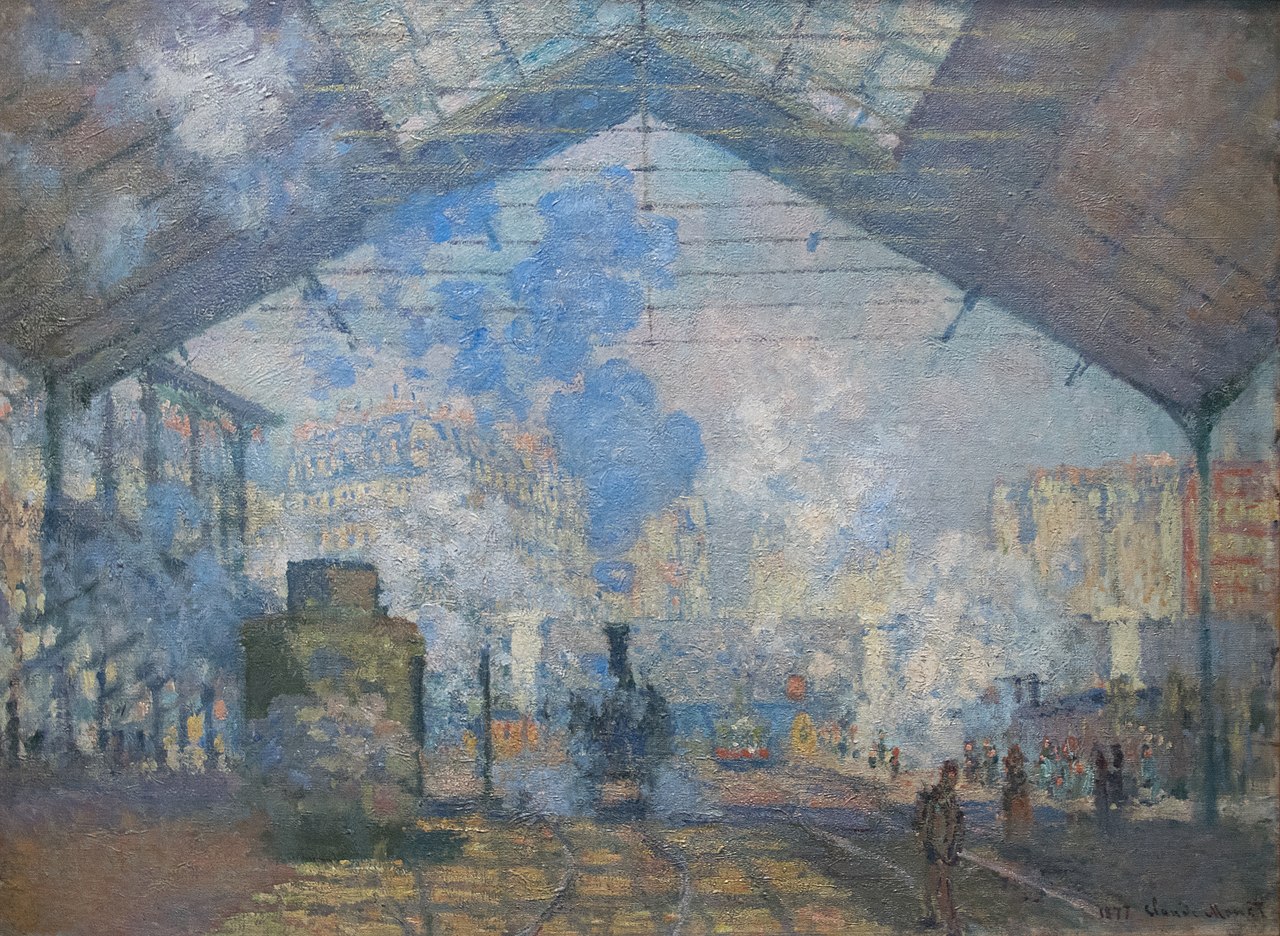
La Gare Saint-Lazare
Museé d’Orsay, Paris
1877
Oil on canvas
La Gare Saint-Lazare reflects the increasing urbanization in Paris in the late 19th century. This painting isn’t a carefully arranged composition—Monet is at the mercy of the elements in front of him. Perhaps this lack of control makes examples such as this seem more natural or “real,” despite the painterly execution of the image. A depiction of truth is woven within the spontaneity of the moment rather than in the way the figures are rendered.
This next image is another example of an artist portraying urban life and capturing a fleeting moment in the city. It’s a unique depiction of Paris, frozen in time and never to be repeated, making the subject matter even more distinctive.
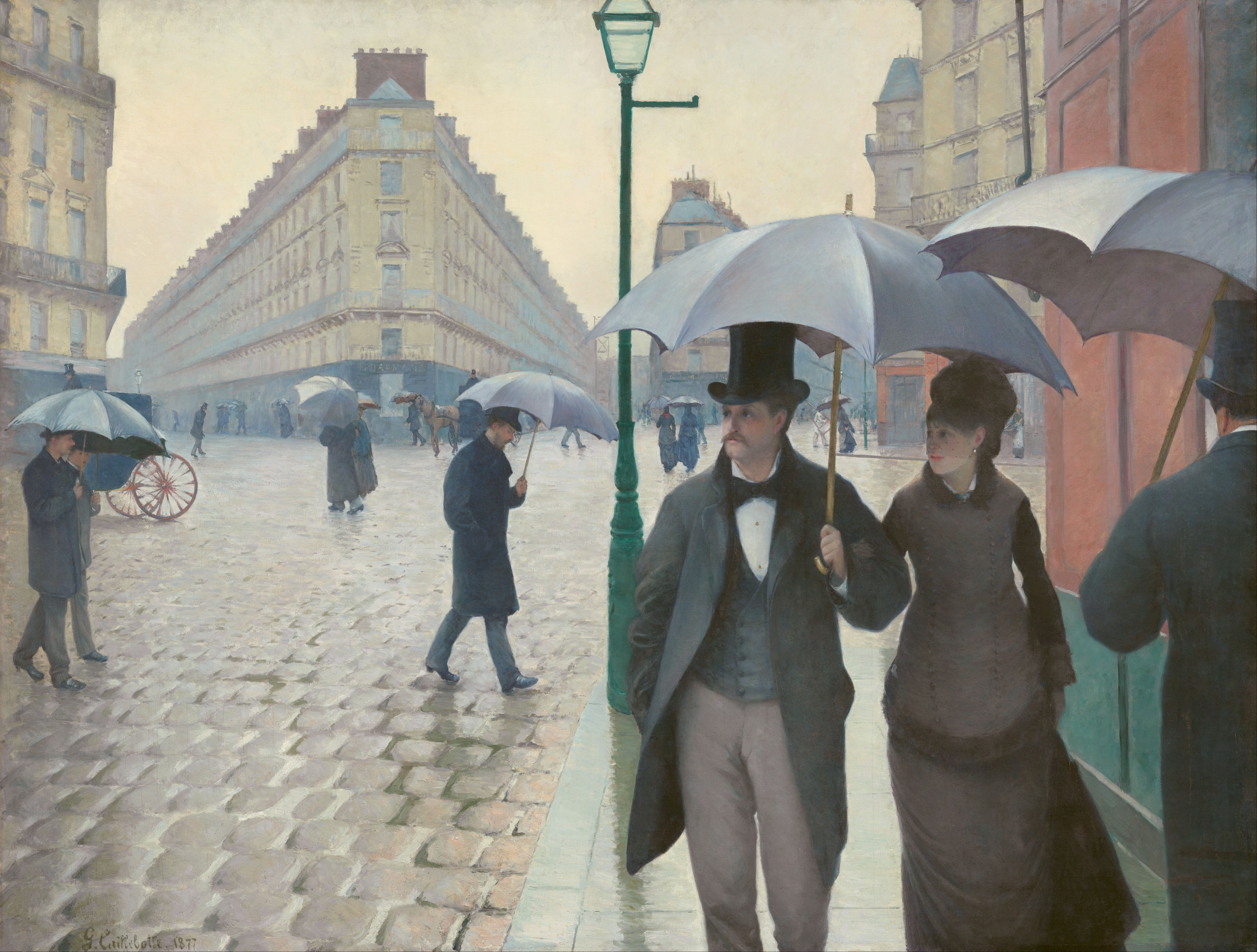
Paris Street: Rainy Day
Art Institute of Chicago, Chicago
1877
Oil on canvas
In Camille Pissarro’s La Place du Théâtre Français, you can sense the expansive width of the scene. The painting features an intriguing perspective as it offers a view from above rather than at street level. As a viewer, you feel as though you’re seated by a window, observing the lively bustle of Parisian life below.
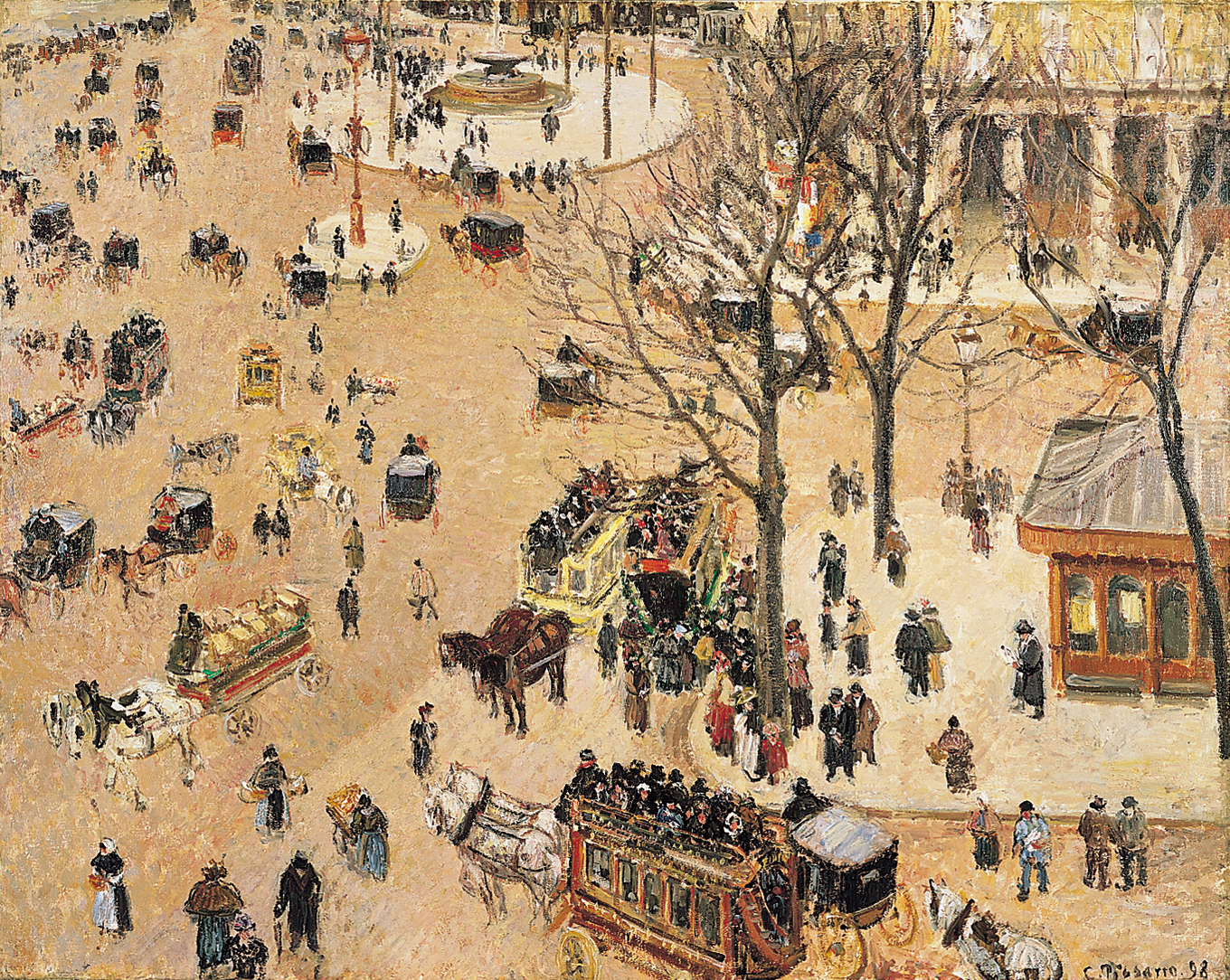
La Place du Théâtre Français
Los Angeles County Museum of Art, Los Angeles
1898
Oil on canvas
Haussmann’s project may have been controversial, but it’s difficult to find fault with the result as it’s depicted here. The streets were teeming with activity. Paris was moving from the indoors to the outdoors. The Haussmannization of Paris provided space for Parisians to get in touch with their city, and the visionary project helped transform Paris into one of the most important cities of culture for decades to come.
The painting Dance at Le Moulin de la Galette by Renoir epitomizes his desire to display joy and beauty in his artwork. It’s a happy image of average people enjoying each other’s company outdoors in Paris. Renoir captures the levity of the moment on the faces of the people in the painting and the movements of the dancers in the middle ground.
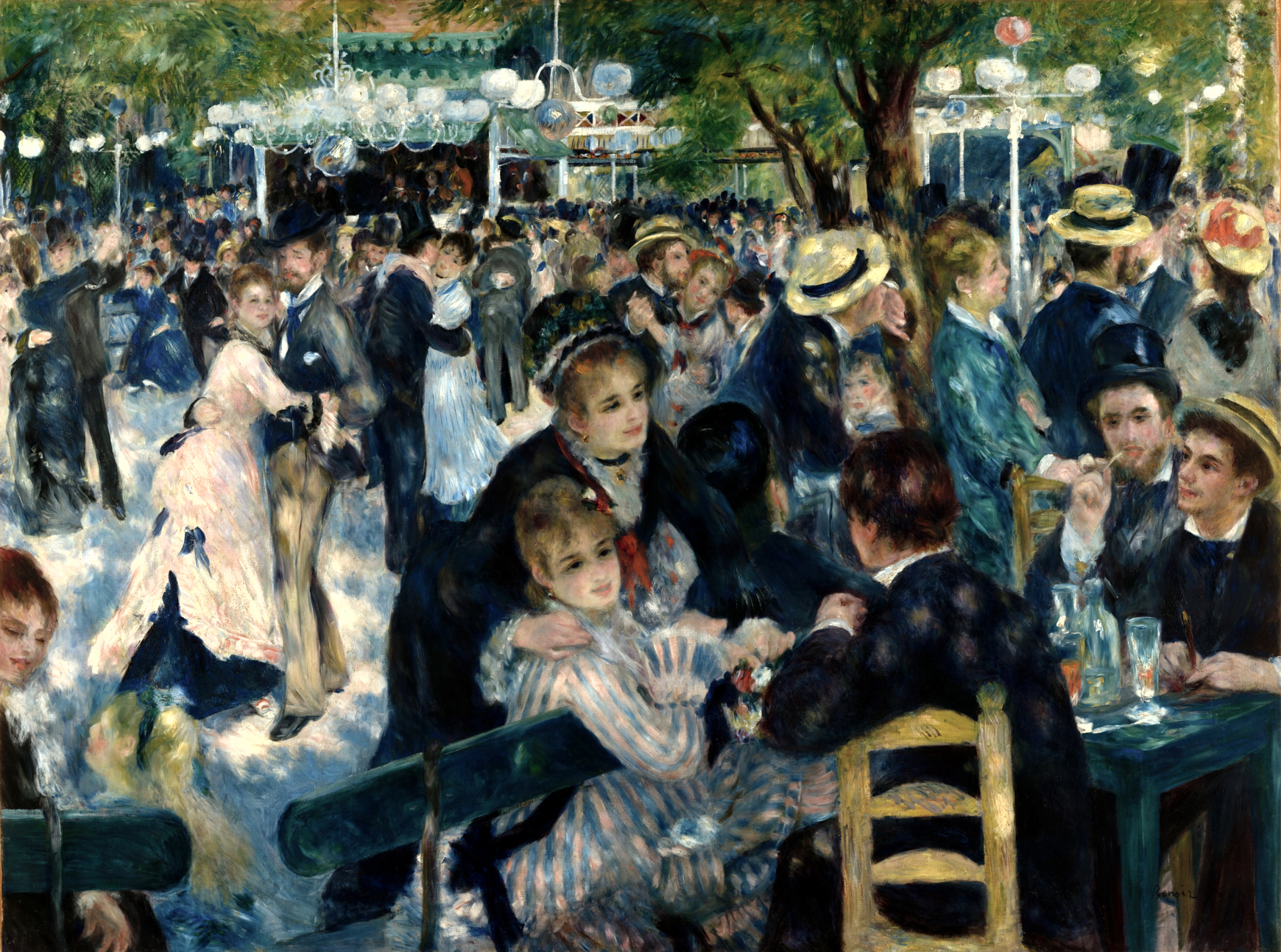
Dance at Le Moulin de la Galette
Musée d’Orsay, Paris
1876
Oil on canvas
This painting exemplifies the Impressionists’ skill in capturing light at a specific time of the day. The dappled spots of color suggest sunlight filtering through the leaves of a tree just outside the painting’s frame. Impressionism as a style enabled artists to authentically portray and reflect the human experience.
Source: THIS TUTORIAL WAS AUTHORED BY IAN MCCONNELL AND TAMORA KOWALSKI FOR SOPHIA LEARNING. PLEASE SEE OUR TERMS OF USE.